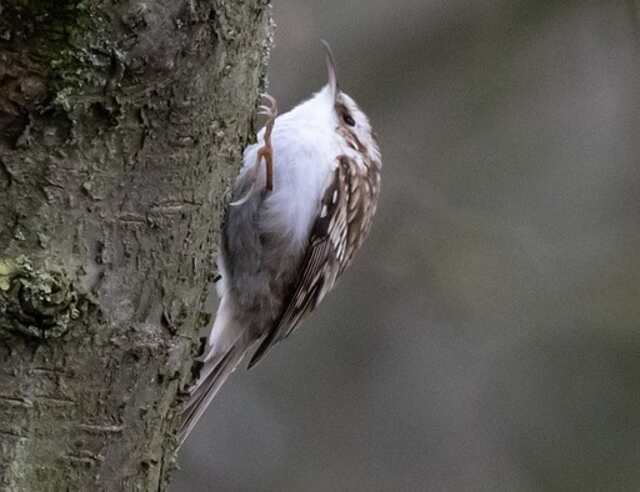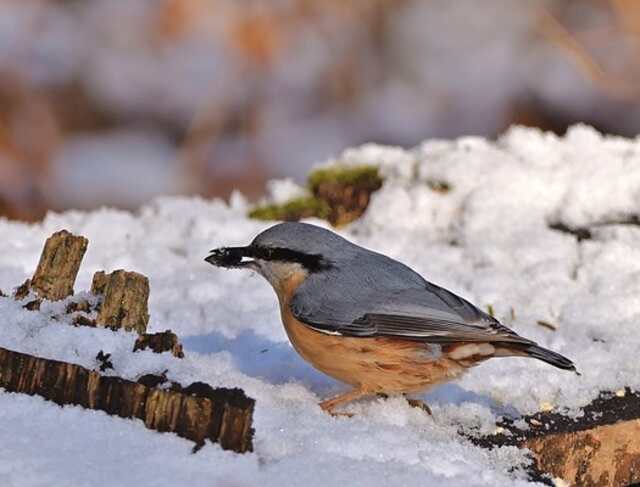As a beginner birdwatcher, it can be overwhelming to identify the different types of birds you encounter. With over 10,000 bird species in the world, it can be a challenging task to distinguish one bird from another. But fear not, with the right knowledge and tools, anyone can learn how to identify birds.
In this guide, we’ll go over the basics of bird identification and introduce you to the most common types of birds you can spot. By the end of this guide, you’ll have the knowledge and confidence to identify different birds during your next birdwatching adventure.
Table of Contents
How to Identify Birds? Mastering Bird ID!
Before we dive into the different types of birds, it’s important to understand the basics of bird identification. Here are some key factors to consider when identifying birds:
Bird Size and Shape
Bird size and shape are two important factors to consider when identifying bird species. The overall size of a bird can give you a general idea of what type of bird you are looking at, and can help you narrow down your identification options. For example, a large bird with a hooked beak and broad wings could be an eagle or a hawk, while a small bird with a slender beak and long, pointed wings could be a swallow or a swift.
Bird shape is also an important factor in identification, as different bird species have different body proportions and wing shapes. For example, ducks and geese have relatively large bodies and broad wings that enable them to fly long distances, while shorebirds have long legs and thin, pointed wings that allow them to maneuver quickly and efficiently over water and mudflats.
In addition to overall size and shape, it’s important to pay attention to specific physical characteristics, such as the length and shape of a bird’s beak, the color and pattern of its feathers, and the shape and color of its eyes. These features can be helpful in distinguishing between similar species, and can provide valuable clues to a bird’s identity.
When observing birds, it’s important to take note of their size and shape, as well as any other physical characteristics that stand out. By combining this information with other factors such as behavior and habitat, you can start to develop a solid understanding of different bird species and become a more confident birder.
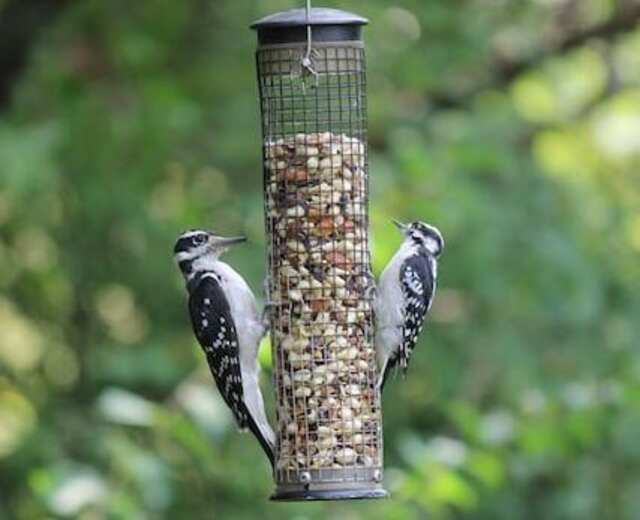
Plumage and Coloration
The plumage and coloration of a bird are critical factors in identifying bird species. It is important to pay close attention to the colors, patterns, and markings on the bird’s feathers, as these can be unique to a particular species. Additionally, other distinct features such as eye rings, patches, or crests can also be helpful in identifying a bird. Birds have a wide range of color patterns and markings, ranging from solid colors to intricate patterns and combinations.
For example, some bird species have bright, bold colors, such as the red feathers of a cardinal, while others have more subtle patterns, such as the intricate plumage of a woodpecker. Understanding the different patterns and colorations is essential for accurate bird identification.
When observing a bird, it’s important to take note of its coloration and any unique patterns or markings. For example, a red head or breast on a bird could indicate a specific species, such as a male Northern Cardinal. Similarly, unique markings, such as the distinct spotted pattern on a juvenile bird’s feathers, can provide important clues to identification.
In addition, it is important to note that a bird’s plumage and coloration can vary depending on its age, sex, and the time of year. For example, male birds often have brighter and more vibrant colors during breeding season, while females and juveniles may have more subdued or different coloration.
By understanding the different plumage and coloration patterns of birds and paying close attention to unique markings and features, you can increase your chances of accurately identifying bird species. This knowledge, combined with other factors such as size and shape, behavior, and habitat, can help you become a skilled and confident birder.

Habitat and Behavior
Understanding a bird’s habitat and behavior can be a valuable tool in identifying bird species. Different bird species have specific habitat preferences, which can vary from forests and wetlands to urban and suburban environments. Additionally, a bird’s behavior can be unique to its species, providing important clues for identification. For example, certain bird species have distinct feeding habits that can be linked to their habitat preference.
Birds that feed on insects are typically found in wooded areas or fields, while waterfowl are often found in wetlands or near bodies of water. Understanding the preferred habitat of a bird species can greatly narrow down the potential identification options. Behavior can also be a crucial factor in identifying bird species.
For example, the way a bird flies, perches, or interacts with other birds can be unique to its species. Some birds, such as the American Goldfinch, have a distinctive flight pattern that can help identify them from a distance. Other birds, like the Brown Creeper, have a unique behavior of climbing trees while foraging, which can make them easy to identify.
It is also important to note that a bird’s behavior can change based on the time of day or season. For example, some birds may only be active during the early morning hours, while others may be more active during the breeding season. Understanding these patterns and behaviors can provide valuable information for identifying a bird species.
By paying close attention to a bird’s preferred habitat and behavior, you can narrow down the potential identification options and increase your chances of accurately identifying a bird species. These factors, combined with other factors such as size and shape, plumage, and vocalizations, can help you become a skilled and successful birder.
Group
Identifying birds by group can be an effective way to narrow down your identification options and make the identification process more manageable. There are several broad groups of birds, each with its own unique characteristics and traits. Some of these groups include waterfowl, raptors, songbirds, and shorebirds.
Waterfowl, which includes ducks, geese, and swans, are typically found near bodies of water such as lakes, rivers, and ponds. They have large, broad bodies and strong, webbed feet that make them excellent swimmers. Raptors, on the other hand, are birds of prey that include eagles, hawks, and owls.
They have sharp talons and hooked beaks that enable them to hunt and capture prey. Songbirds, or passerines, are a diverse group of birds that includes finches, sparrows, warblers, and many others. They are typically small, agile birds with a wide variety of songs and calls.
Finally, shorebirds are a group of birds that are typically found along the coast or near bodies of water, such as sandpipers and plovers. They have long legs and thin, pointed wings that allow them to navigate over wet sand and mudflats.
By focusing on the physical characteristics and behaviors of birds within a specific group, you can quickly start to narrow down your identification options and make more accurate identifications.
It’s important to pay attention to details such as size, shape, color, and behavior, as well as habitat and geographic location, in order to make an accurate identification. With practice and experience, identifying birds by group can become a valuable tool for any birder.

Season
Identifying birds by season can also be a helpful tool for bird identification. Many bird species have specific breeding, migration, and wintering seasons, and knowing which birds are typically present during certain times of the year can narrow down your identification options.
For example, in the spring and summer, many songbirds return from their wintering grounds and can be seen and heard singing and nesting. In the fall, many species of waterfowl and shorebirds migrate through or settle in for the winter. In the winter, some species such as finches and sparrows flock together in search of food.
Additionally, some bird species may have different plumage or behaviors during different seasons, making them easier to identify. Paying attention to the season and the behaviors and plumage of the birds present can be a useful tool in the bird identification process.
This knowledge of seasonality can also help birders plan their birding trips, as certain areas may be more productive for seeing particular bird species during different times of the year. Keeping a birding journal or using online birding resources can be helpful for keeping track of seasonal bird sightings and patterns.
Sounds and Calls
Learning to identify bird sounds and calls can take time and practice, but it can be a very useful skill for birders. One way to get started is to listen to recordings of bird songs and calls, which can be found online or in field guides. You can also try going on bird walks with experienced birders who can help you to identify different vocalizations.
When listening to bird sounds, it’s important to pay attention to the pitch, rhythm, and tone of the sound. For example, some bird species have high-pitched songs or calls, while others have lower-pitched or more melodious sounds. Some birds may repeat their songs or calls in a regular pattern, while others may have more irregular rhythms.
The tone of the sound can also be important – for example, some bird songs are very clear and musical, while others may be more raspy or buzzy. It’s also important to note that birds may have different vocalizations in different contexts. For example, during mating season, birds may have specific songs or calls that they use to attract a mate.
When birds feel threatened or alarmed, they may give different calls to alert other birds in the area. Understanding the different contexts in which birds may make specific sounds can help you to identify different species. Overall, learning to identify birds by sounds and calls can be a valuable tool for birders, especially when birds are difficult to see or are hiding in dense vegetation.
With practice and experience, you can develop the ability to recognize a wide variety of bird songs and calls, and use this knowledge to identify the birds that are present. If you would like to learn more about bird songs and calls, check out How to Identify Birds by Sounds? Expert Tips and Tricks!
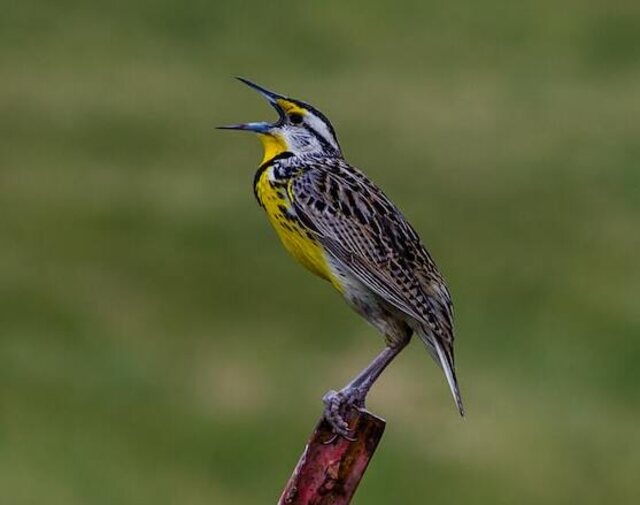
Some Common Types of Birds
Now that we have covered the basics of bird identification, let’s take a look at some of the most common types of birds you can spot. These birds can be found in different habitats, and each of them has unique characteristics that can aid in identification.
Sparrows
Sparrows are small, brown birds with short, conical bills. They are commonly found in urban and suburban areas, and can be identified by their distinctive chirping call. These birds are usually found hopping around on the ground or perched on low shrubs or fences.
Finches
Finches are small, colorful birds with conical bills. They are often found in forests, fields, and backyards, and can be identified by their distinctive songs. These birds are known for their vibrant colors, and they can usually be found perched on branches or feeding on seeds on the ground.
Woodpeckers
Woodpeckers are medium-sized birds with distinctive bills that they use to drill into trees. They are commonly found in forests and woodlands, and can be identified by their unique drumming and tapping sounds. These birds can be found perched on the trunks of trees, and they often move up and down the tree, tapping and drilling as they search for insects.
Hawks
Hawks are large birds of prey with sharp talons and hooked bills. They are commonly found in open habitats such as fields and meadows, and can be identified by their soaring flight patterns and sharp calls. These birds can often be seen perched on trees or poles, scanning the area for prey. They are renowned for their impressive ability to hunt.
Owls
Owls are nocturnal birds with large, forward-facing eyes and sharp talons. They are commonly found in forests and woodlands, and can be identified by their distinctive hooting calls. These birds are usually seen perched on branches or flying silently through the woods at night.
Ducks
Ducks are water birds with webbed feet and bills adapted for feeding in water. They are commonly found in ponds, lakes, and rivers, and can be identified by their unique quacking and honking calls. These birds can often be seen swimming in the water or diving for food.
Seagulls
Seagulls are medium to large birds with white and gray plumage. They are commonly found near coastlines and can be identified by their loud, screeching calls. These birds can often be seen flying near the ocean, perched on cliffs, or scavenging for food on the beach.
Blue Jays
Blue Jays are medium-sized birds with bright blue and white plumage. They are commonly found in forests, parks, and backyards, and can be identified by their distinctive, harsh calls.
Cardinals
Cardinals are medium-sized birds with bright red plumage and distinctive crests. They are commonly found in forests and backyards, and can be identified by their loud, clear whistling songs.
Robins
Robins are medium-sized birds with orange and brown plumage. They are commonly found in fields, gardens, and backyards, and can be identified by their distinctive, melodious songs.
Crows
Crows are large, all-black birds with distinctive calls. They are commonly found in urban and suburban areas, and can be identified by their loud, cawing calls.
Pigeons
Pigeons are medium-sized birds with plump bodies and small heads. They are commonly found in urban and suburban areas, and can be identified by their distinctive cooing calls.
Swans
Swans are large, graceful birds with white plumage and long necks. They are commonly found in lakes, ponds, and rivers, and can be identified by their distinctive honking calls.
Geese
Geese are large water birds with long necks and distinctive “V” shaped formations during migration. They are commonly found in ponds, lakes, and rivers, and can be identified by their honking calls.
Wrens
Wrens are small, brown birds with distinctive tails that they often hold upright. They are commonly found in forests and backyards, and can be identified by their loud, melodious songs.
Challenges and Pitfalls of Bird Identification
Identifying birds can be challenging, even for experienced birdwatchers. Common challenges include difficult lighting or weather conditions, similar-looking species, and misidentifications.
To overcome these challenges, it’s important to take your time and observe birds carefully. Try to look for multiple identification features before making a positive identification.
Commonly Misidentified Birds
Even experienced birdwatchers can struggle with identifying certain species. Here are five commonly misidentified bird species, along with tips for identifying them correctly:
Downy Woodpecker vs. Hairy Woodpecker: These two species look very similar, but the Downy Woodpecker is smaller with a shorter bill, while the Hairy Woodpecker is larger with a longer bill.
American Crow vs. Common Raven: Both are black birds, but the American Crow is smaller with a fan-shaped tail and a squared-off head, while the Common Raven is larger with a wedge-shaped tail and a diamond-shaped head.
Song Sparrow vs. Lincoln’s Sparrow: Look for differences in overall color and pattern, as well as the color of their bills.
Ring-billed Gull vs. Herring Gull: Look for differences in size (the Ring-billed is smaller) and the pattern on their wings.
Mallard vs. American Black Duck: These two ducks are similar in appearance, but the Mallard has a bright green head and yellow bill, while the American Black Duck has a duller brown head and an olive-yellow bill.
Snowy Egret vs. Great Egret: These two species both have white plumage, but the Snowy Egret has black legs and bright yellow feet, while the Great Egret has black legs and black feet.
Killdeer vs. Spotted Sandpiper: Both birds have brown and white markings, but the Killdeer has two black bands across its chest and a red eye-ring, while the Spotted Sandpiper has spots on its breast and a white eye-ring.
Red-winged Blackbird vs. Common Grackle: These birds both have glossy black plumage, but the Red-winged Blackbird has red and yellow shoulder patches, while the Common Grackle has a long, keeled tail and a more iridescent head.
House Sparrow vs. House Finch: These two small birds are often confused, but the House Sparrow has a gray cap and black bib, while the House Finch has a red head and chest.
Blue Jay vs. Steller’s Jay: Both jays have blue feathers, but the Blue Jay has a white chest and black markings on its head, while the Steller’s Jay has a black head and blue markings on its chest.
Belted Kingfisher vs. Common Loon: These birds are often confused because they both have a distinct call, but the Belted Kingfisher is a small bird, that has a blue-gray back and wings, a white belly, and a crested head, while the Common Loon is very large, and has a distinctive black-and-white checkered back and a long, pointed bill.

Tools for Bird Identification
Identifying birds can be a lot easier with the right tools. Here are some essential tools to have on hand during your birdwatching adventures:
Binoculars
Binoculars are an essential tool for any aspiring birdwatcher. While it’s possible to observe birds with the naked eye, you’ll be missing out on important details that can help with identification. A good pair of binoculars will allow you to get a closer look at a bird’s physical characteristics, plumage, and behaviors.
If you’re new to birdwatching and are looking for a great pair of binoculars to get started, we highly recommend the Celestron Nature DX 8×42 Binoculars, available on Amazon. These binoculars are affordable, lightweight, and provide clear and sharp images of birds from a distance. With a magnification of 8x and a 42mm objective lens, they offer a wide field of view and excellent light-gathering capabilities.
Investing in a quality pair of binoculars can make all the difference in your birdwatching experience. Not only will you be able to spot more birds, but you’ll also be able to appreciate their beauty and behavior in greater detail. Don’t miss out on this essential tool – grab a pair of binoculars today and take your birdwatching to the next level!
Field Guides
If you’re a bird enthusiast, then a field guide is an essential tool for identifying birds in the wild. Whether you’re a beginner or an experienced birder, having a reliable field guide is crucial to your success.
If you’re just starting out, we recommend the “National Geographic Field Guide to the Birds of North America.” This guide features over 1,000 species, detailed illustrations, and useful information on each bird’s habitat, behavior, and migration patterns. An ideal book for beginners, easy and intuitive to use.
No matter which field guide you choose, having one is essential for any birder. Why not grab a copy today? You’ll be amazed at the variety and beauty of the birds you’ll discover with your new guide. Click on this link to head over to Amazon now to grab a copy for yourself, and start your birding adventure today!
Birding Apps
In addition to field guides, birding apps are also a useful tool for identifying birds in the wild. Many birding apps offer features such as bird calls, photos, and range maps, which can be extremely helpful for identifying birds. These apps allow you to identify birds by answering a few simple questions, and it includes detailed information on each bird species, including photos, range maps, and audio recordings.
Some popular birding apps include “Merlin Bird ID” by the Cornell Lab of Ornithology, “iNaturalist” by the California Academy of Sciences, and “eBird” by the Cornell Lab of Ornithology and “Audubon Bird Guide” or “BirdNET“. These apps can be downloaded onto a smartphone or tablet and used in the field.
Birding Ethics
As a birder, it is essential to be mindful of the impact we have on the birds and their habitats. Following ethical guidelines is crucial to ensure their safety and well-being. Staying on designated trails not only protects the birds from unintentional harm, but also preserves their habitats for future generations.
Getting too close to birds can cause them to become distressed or even abandon their nests, so it’s important to maintain a safe distance and use binoculars or a scope to observe them. It’s also important to be respectful of birds during nesting season.
Nesting birds are particularly vulnerable and can be easily disturbed, which can lead to nest abandonment and reduced breeding success. By giving them space and avoiding nesting areas, we can help ensure their survival. Respecting private property is another crucial aspect of birding ethics.
Many birds’ habitats are on private land, and it’s important to obtain permission from the landowners before entering. Trespassing on private property can cause harm to the birds and their habitats, as well as damage our relationships with landowners and other birders.
Lastly, sharing specific bird locations with others can lead to overcrowding and harm to the birds. It’s important to keep in mind that many birds are sensitive to disturbance and can easily be stressed out by large numbers of people.
By keeping specific locations confidential, we can help reduce overcrowding and preserve the natural habitats of the birds. Remember, ethical birding practices not only benefit the birds, but also enhance our experiences as birders.
By following these guidelines, we can help ensure that these amazing creatures continue to thrive in their natural habitats.
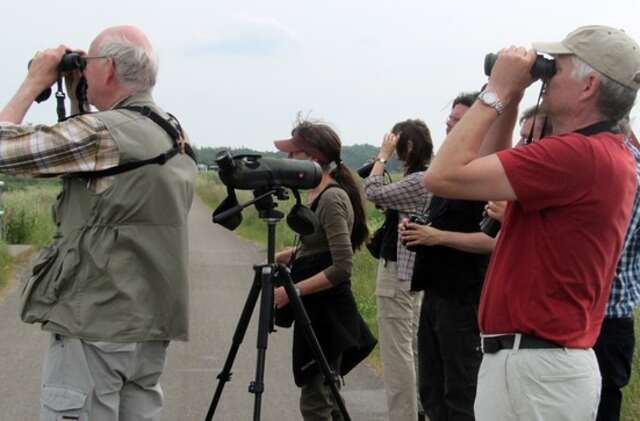
Frequently Asked Questions
How do I choose a field guide for birding?
When choosing a field guide for birding, consider the region you’ll be birding in, as different regions have different bird species. Look for guides with clear photos or illustrations, range maps, and detailed descriptions of each species. Consider whether you prefer a print or digital guide.
Are birding apps helpful for identifying birds in the wild?
Birding apps can be helpful for identifying birds in the wild, providing photos, range maps, and recordings of bird calls. Some popular birding apps include Merlin Bird ID and iBird Pro. However, it’s important to remember to use apps responsibly and not rely solely on them for identification.
What factors should I consider when choosing binoculars for birding?
When choosing binoculars for birding, consider factors such as magnification, lens size, and weight. Look for binoculars with a magnification of 8x or 10x and a lens size of 30-40mm. Consider the weight of the binoculars, as heavier binoculars can be tiring to hold for long periods of time.
Why is it important to follow birding ethics?
Following birding ethics is important to ensure the safety and well-being of birds. This includes staying on designated trails, keeping a safe distance from birds, and avoiding disturbing their natural habitats. It’s also important to avoid disturbing birds during nesting season and to respect private property.
How can I avoid disturbing birds during nesting season?
To avoid disturbing birds during nesting season, be aware of the signs of nesting, such as birds carrying nesting material or exhibiting territorial behavior. Avoid approaching nests or disturbing the surrounding area. If you accidentally disturb a nesting bird, move away quickly and quietly to avoid causing further disturbance.
Related Post:


